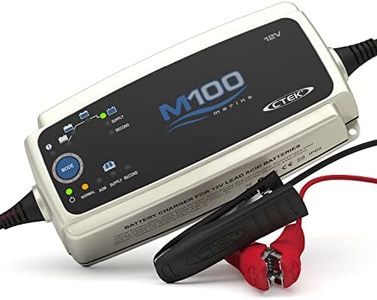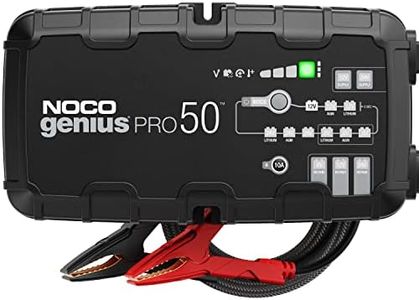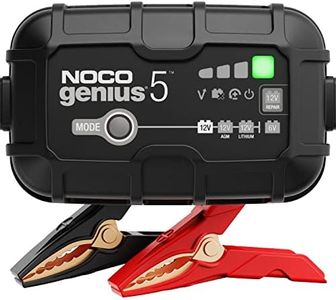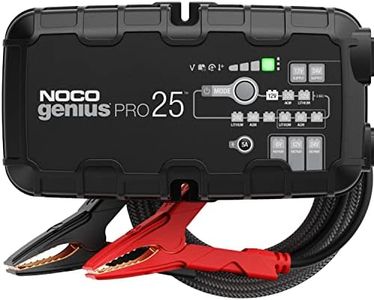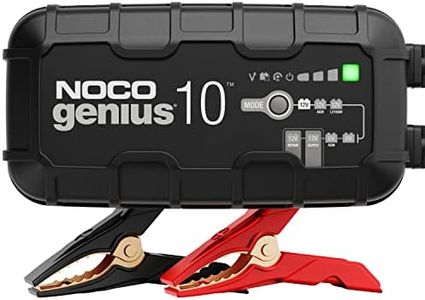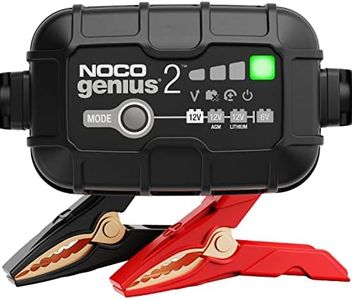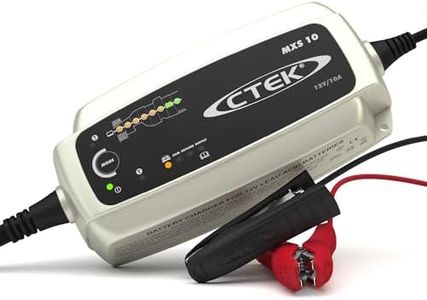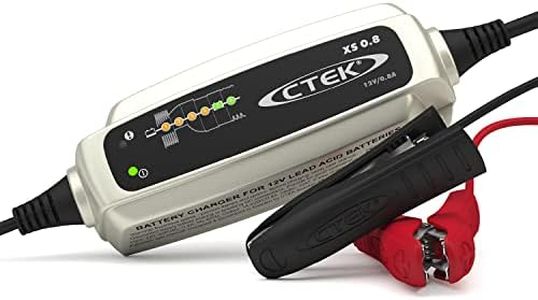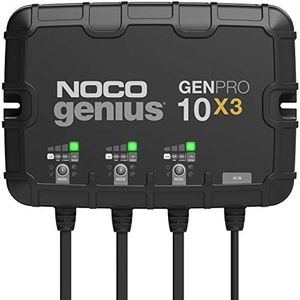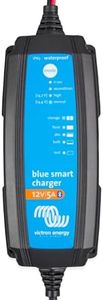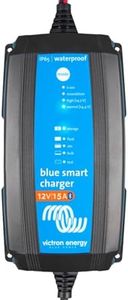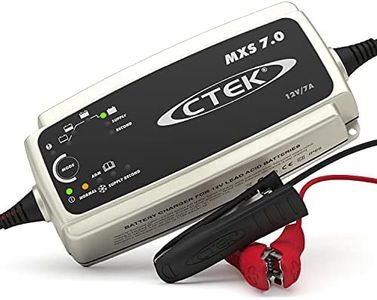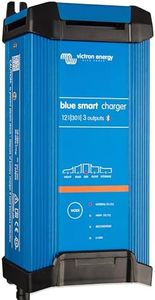We Use CookiesWe use cookies to enhance the security, performance,
functionality and for analytical and promotional activities. By continuing to browse this site you
are agreeing to our privacy policy
10 Best Marine Battery Trickle Chargers
From leading brands and best sellers available on the web.Buying Guide for the Best Marine Battery Trickle Chargers
Choosing the right marine battery trickle charger is essential to keep your boat's battery healthy and ready for use. Trickle chargers provide a low, steady current to maintain battery power when the boat is not in use, helping to prevent battery damage from discharging or overcharging. With many options available, understanding the key features will help you find the best fit for your needs and keep your marine battery in top condition season after season.Charging VoltageCharging voltage refers to the electrical potential provided by the charger to your battery. Marine batteries typically require a charger matched to their voltage, most commonly 12V or 24V. It's important because using the wrong voltage can damage the battery or reduce its lifespan. If you have a single standard battery, a 12V charger is usually needed. For boats with larger or multiple batteries wired in series, a 24V charger may be necessary. Always check your battery's voltage and choose a charger that matches it exactly.
Charging Current (Amperage)The charging current, measured in amps (A), is the rate at which energy is supplied to the battery. In trickle chargers, this is usually a low value (often 0.5-2A). A lower amperage provides a gentler, longer charge, which is ideal for maintaining battery health during storage. Higher currents can charge the battery faster, but may not be as safe for long-term maintenance. If you plan to leave your battery connected for extended periods, go for trickle chargers at the lower end of this range. However, if you want to quickly top up a battery, a slightly higher current may be helpful. Match the choice to whether you want slow maintenance or occasional quick charging.
Automatic Shutoff or Smart ChargingAutomatic shutoff or smart charging means the charger can detect when the battery is full and either stops or reduces charging to prevent overcharging. This feature is crucial because overcharging can damage marine batteries and shorten their life. Modern trickle chargers often have this built in, but older models may not. If you want worry-free operation—especially when you're away from the boat for long periods—always look for a charger with this automatic protection.
Compatibility with Battery TypeMarine batteries come in different types, such as lead-acid, AGM, or gel. Not all chargers are suitable for all battery types; using the wrong charger can damage your battery. Look at what your charger supports—some are universal, while others are specialized. If you know your battery type, pick a charger made for it. If you might change battery types in the future or have different batteries, a versatile charger that safely works with multiple types is a wise pick.
Water and Weather ResistanceBecause you'll use the charger in a marine environment, water resistance is important for safety and longevity. Chargers are rated for how well they resist water, with terms like 'splashproof,' 'water-resistant,' or 'fully waterproof.' If your charging area is sheltered, basic water resistance might be enough. But if it could get wet or is exposed to rain or spray, look for a highly water-resistant or waterproof unit to stay safe and avoid malfunction.
Connection Type and Safety FeaturesConnection type refers to how the charger connects to your battery—clamps, ring terminals, or permanently mounted options. Choose the connection type that matches your convenience and safety needs. Safety features like reverse polarity protection (alerting if you connect the cables wrong) and short-circuit protection are also important for safe use, especially if you won’t be on hand while it charges. If you're not experienced with battery charging, prioritize chargers with strong safety features to avoid accidents.
